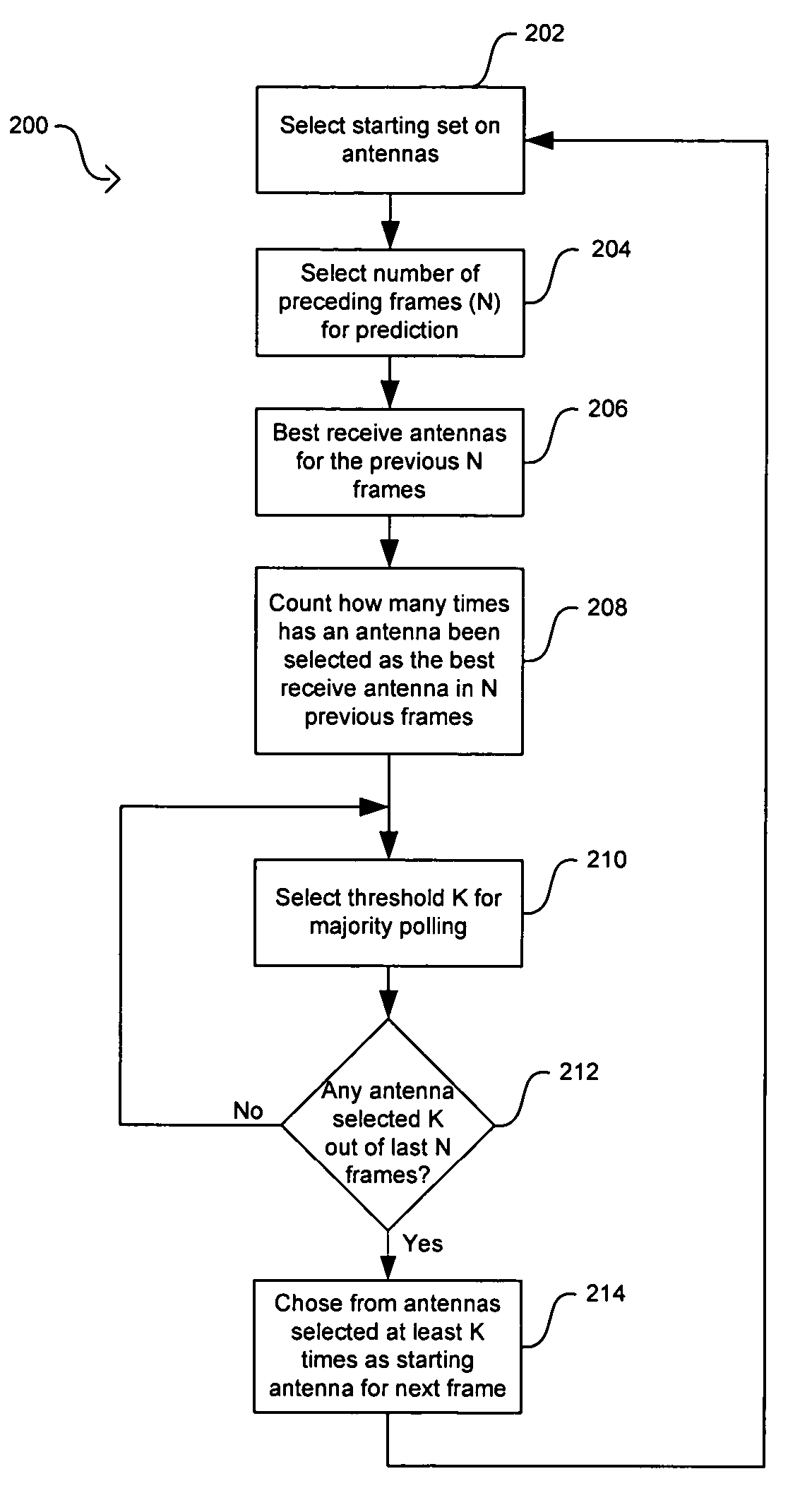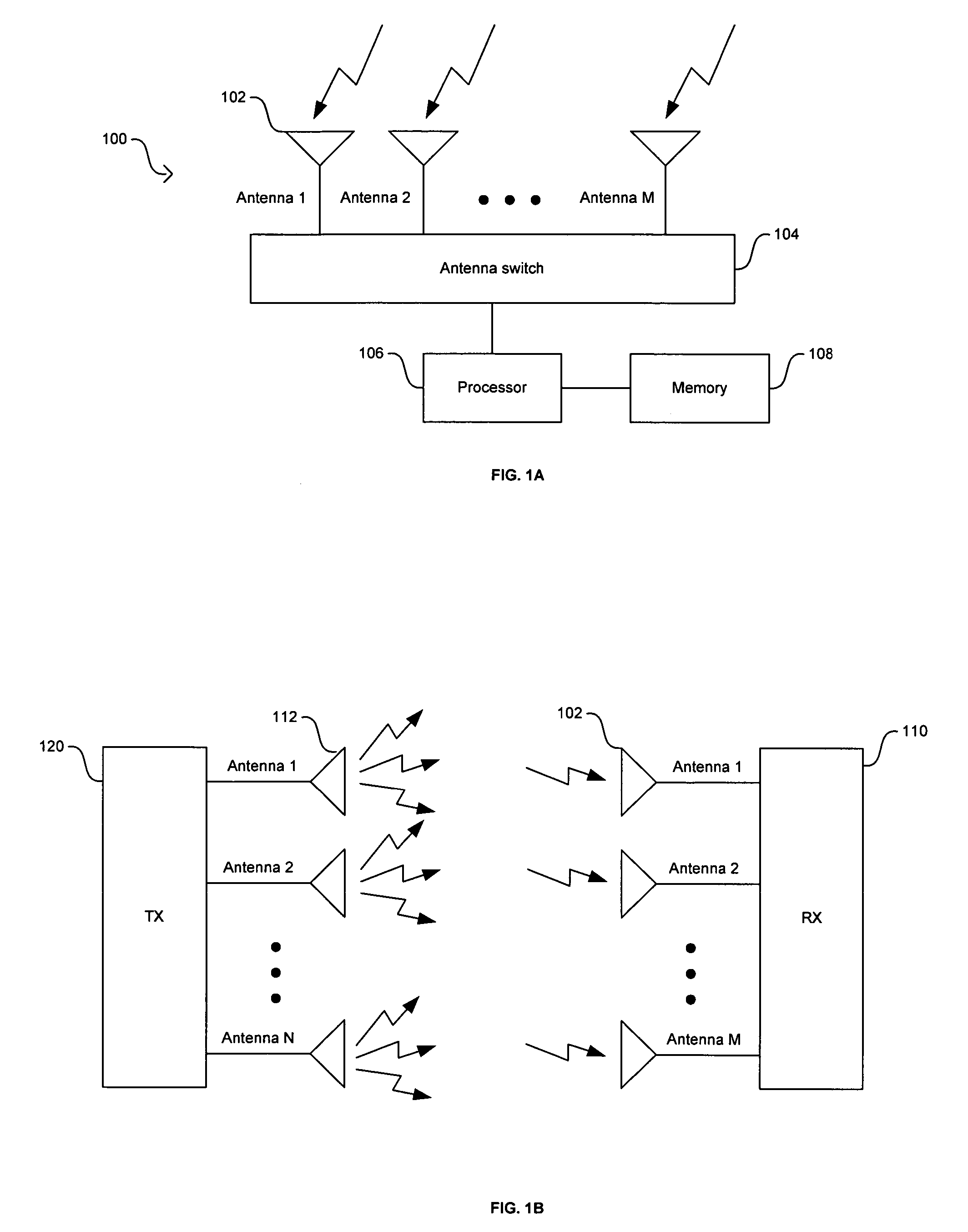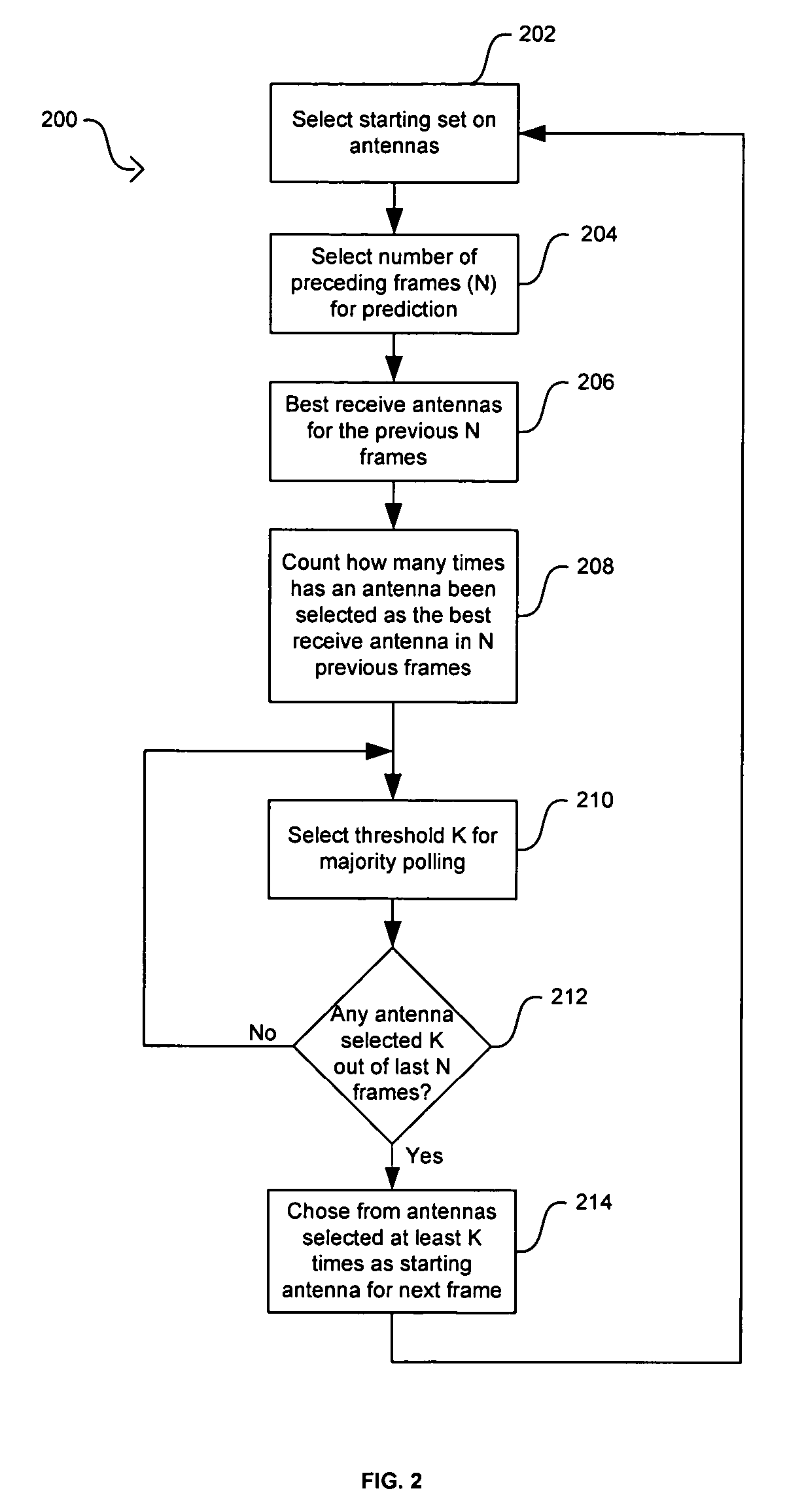Method and system for antenna selection diversity with prediction
a technology of antenna selection and prediction, applied in diversity/multi-antenna systems, digital transmission, polarisation/directional diversity, etc., can solve the problems of receiving signal strength at a given time, adversely affecting system capacity, and degrading detector performance, so as to improve signal detection efficiency and speed, reduce transmission processing overhead, and improve efficiency and speed
- Summary
- Abstract
- Description
- Claims
- Application Information
AI Technical Summary
Benefits of technology
Problems solved by technology
Method used
Image
Examples
Embodiment Construction
[0030]Certain embodiments of the invention may be found in a method and system for antenna selection diversity with prediction. Wireless communication systems may utilize receivers with multiple antennas to enhance the performance and robustness of the receiver and to increase the reliability of the communications link. Selection diversity in systems with multiple antennas works best when the set of starting antennas may be the best antennas for signal detection and signal decoding. Certain aspects of the method for antenna selection diversity with prediction may comprise collecting information that may be associated with at least one of the previous received frames and determining at least one starting receiving antenna for the next frame based on the collected information. The collected information may correspond to the performance of at least one of the antennas in the receiver system. The collected information may be one of several selection metrics that measure the performance ...
PUM
 Login to View More
Login to View More Abstract
Description
Claims
Application Information
 Login to View More
Login to View More - R&D
- Intellectual Property
- Life Sciences
- Materials
- Tech Scout
- Unparalleled Data Quality
- Higher Quality Content
- 60% Fewer Hallucinations
Browse by: Latest US Patents, China's latest patents, Technical Efficacy Thesaurus, Application Domain, Technology Topic, Popular Technical Reports.
© 2025 PatSnap. All rights reserved.Legal|Privacy policy|Modern Slavery Act Transparency Statement|Sitemap|About US| Contact US: help@patsnap.com



